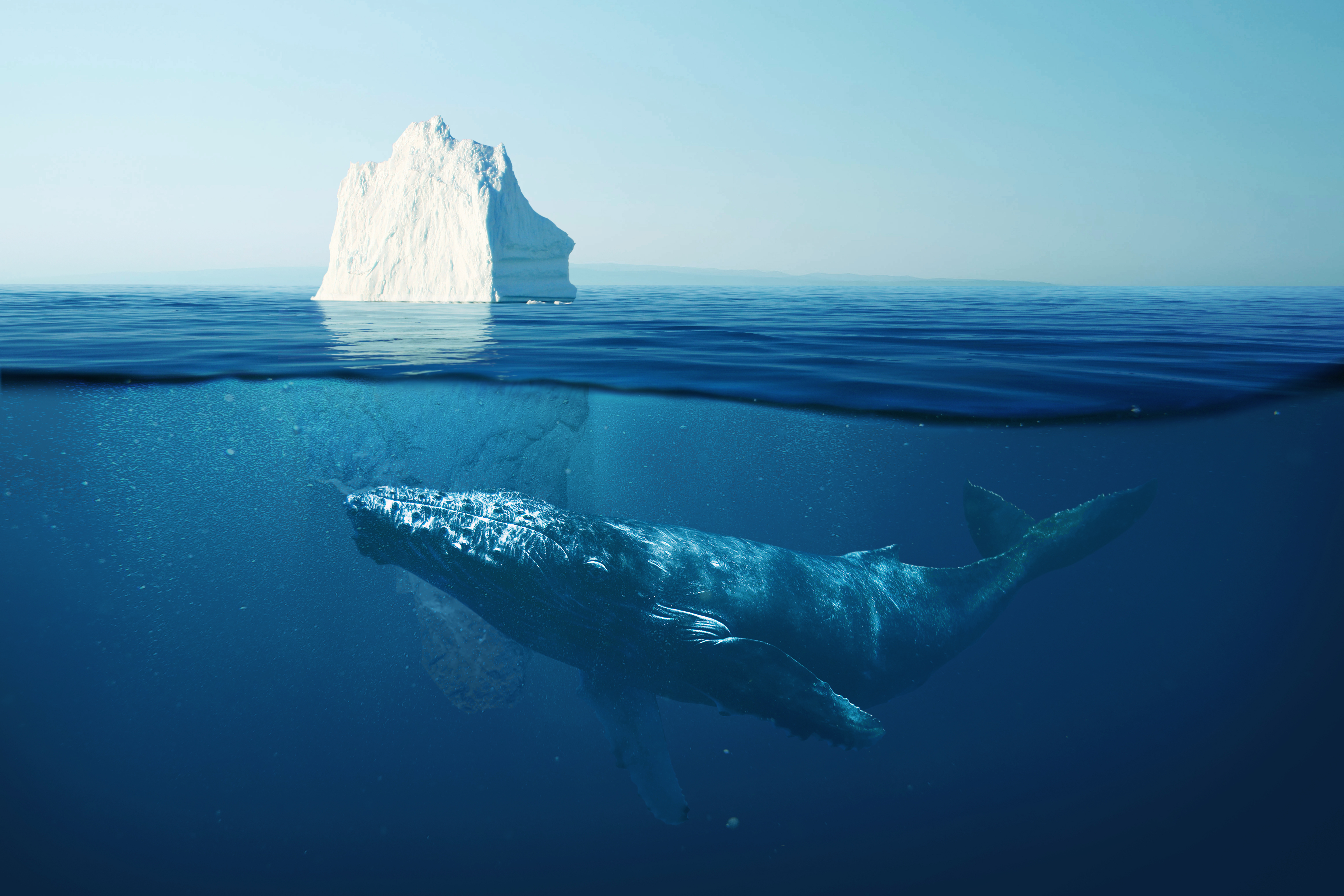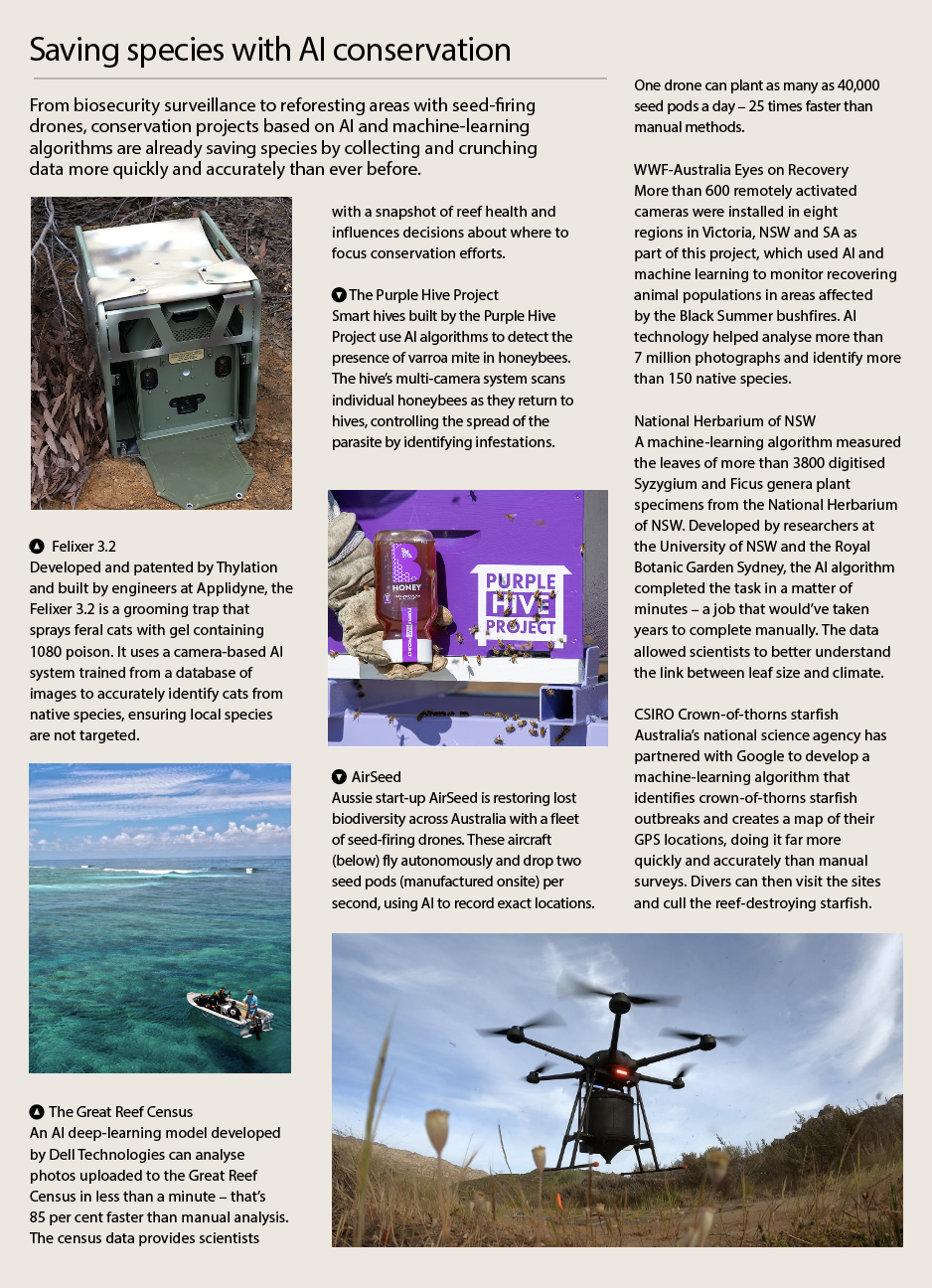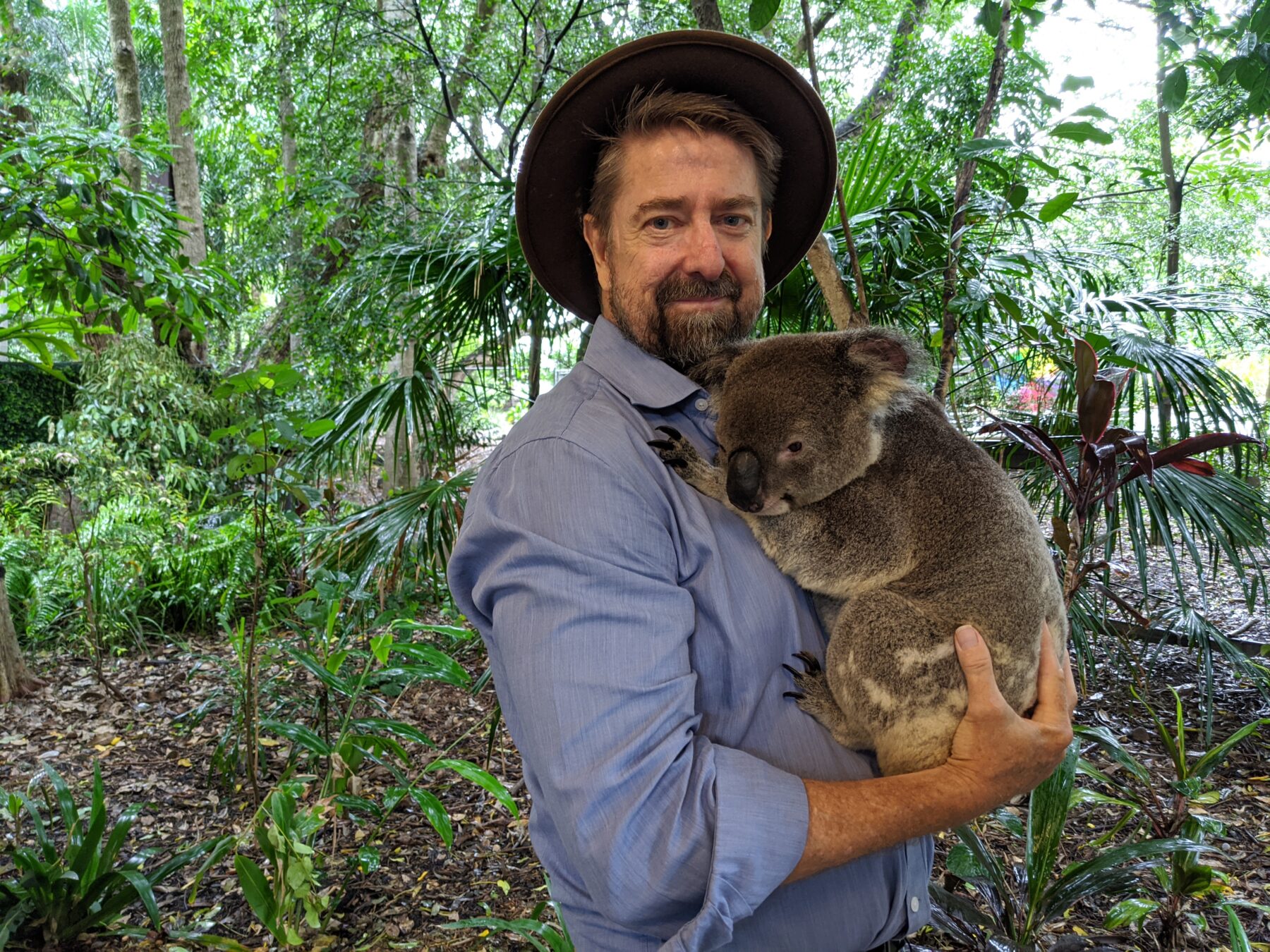The unfathomable expanse of the Southern Ocean presents a problem for anyone studying it. Half a century of audio recordings has shown the waters around Antarctica are teeming with life. So much, in fact, it would take decades for researchers such as Australian Antarctic Division (AAD) bioacoustics expert Dr Brian Miller to manually analyse all the data. Brian’s work focuses on identifying and understanding the behaviours of Antarctic marine mammals by listening to underwater audio recordings, notably the calls of blue whales. “There are species in the Antarctic that make a lot of noise but aren’t encountered very frequently, so you can learn a lot by listening for them,” Brian explains. “There are dozens of species of animals…and they all make a variety of noises.”
The diversity of species Brian is listening for means there’s a huge volume of information to deal with. Sorting through it is a massive task. “We’ve now amassed a collection of more than 100,000 hours of recordings from the Antarctic, but we’ve always been constrained by our ability to process these data efficiently,” he says. Listening to all these recordings would take decades. As well as being monotonous to do, that’s simply too slow for the conservation action needed to save threatened species. A time-saving solution has been for Brian’s team to apply AI algorithms to the task. “It’s a fantastic time to be marrying up AI, or machine-learning techniques to be more specific, with conservation work, and it fits particularly well with acoustics,” Brian says.
During the past decade, the growing sophistication of AI algorithms has rapidly accelerated scientists’ ability to process information. And it couldn’t come at a better time. With eco-systems on the brink of collapse around the world, the race is on to fix environmental problems before it’s too late. It’s one of the greatest challenges humans have ever faced, and the actions we take all hinge on how well we understand different environments.
“Nature is not more complicated than you think, it is more complicated than you can think,” American ecologist Frank Edwin Egler wrote in 1977 in an attempt to describe the complexity of nature. Is it a little insulting? Yes. But it’s also true. Even the ‘simplest’ of environments is still extremely complex and almost impossible to fully understand. Conservation researchers often need to spend hours, days and years trawling through the environmental data they’ve collected and recorded. This hugely time-consuming process limits the progress researchers can make. But with new technologies doing the ‘thinking’ for us, that could be about to change.

Using computers to process data isn’t new to conservation research, but in the past, they’ve been limited in what they can accomplish. “Classical algorithms,” as Brian calls them, are coded to look for specific patterns in data that can be useful, but they start to struggle when the data gets more complicated. “The more data and the more variability you throw into them, their performance just won’t get any better, and sometimes it can get actually become much worse,” Brian says.
In comparison, AI programs can learn and improve their ability to interpret data. But, just like humans, these programs need to be trained. For Brian’s team, this involves marine acoustics experts labelling audio files and feeding them into a program. Once the program is ready, it can process data that would take a research team months to finish, in a matter of hours. In some cases, machine-learning algorithms are more accurate than their human counterparts, and the algorithms only improve with time as they gather more and more training data. “I’m training AIs to listen to the ocean for me so I don’t have to listen to 50 years of ocean noise to pick out the moans and drones of critically endangered baleen whales in the Antarctic,” Brian says.
Of course, the human element can never be entirely removed from research, and Brian stresses how important it is to have the right collaboration of experts contributing to the programs. “It’s people who have that biological experience working closely with people who have AI experience, and that ability to tweak the code and make the algorithm smarter…I think that’s a pretty good recipe for success,” Brian says. His project has been so successful the AAD is now also implementing AI algorithms to look at whale diving behaviour, using video footage from 360-degree cameras mounted on ships.
Perhaps the best thing about the use of AI in conservation is that it lets researchers focus on what’s important. “This frees us up to think about the bigger picture problems. It frees us up to think about designing better studies to focus on the analysis, to focus on the gaps…it really is a revolution,” Brian says. “I suspect with this really disruptive technology, this is going to be the tip of the iceberg, and I hope it continues. My prediction would be that this is going to become much more widespread across science in general.”

Looking at conservation science in Australia, it seems Brian’s predictions are already coming true. AI programs are being used in a rapidly growing variety of ways across Australia to aid conservation efforts. In Tasmania, researchers using AI image analysis can now quickly and easily identify the signs of Devil Facial Tumour Disease (DFTD) from camera-trap photos. DFTD is one of the only known forms of transmissible cancer, and it has been decimating Tasmanian devil populations. Advanced knowledge of how this disease spreads may help to save this iconic Australian species.
At the Queensland University of Technology (QUT), the Australian Acoustic Observatory is using AI algorithms to sort through millions of hours of audio recording from a national network to identify the calls of endangered Australian birds. The information provided by AI will help shape conservation management of environments across Australia.
Meanwhile, researchers from Monash University are using AI to analyse satellite imagery of Australian forests. A program is being designed to automatically measure the light reflected from forest canopies and process that data to accurately identify areas of high evaporation and dryness. The plan is to create a system that can provide early warning about areas of high bushfire risk. All of these projects are, as Brian says, “the tip of the iceberg”, with conservation scientists applying AI technology in many creative and diverse ways.

Professor Grant Hamilton, the founding director of QUT’s Conservation AI Network believes AI technologies can empower more than just researchers. He thinks the advantages of AI should be placed in the hands of those who do on-the-ground conservation. “People in universities are very good at writing papers and developing methodologies, but we’re not necessarily the ones who are going to go out and count koalas or pull weeds. The Conservation AI Network is an attempt to bridge that gap,” Grant says. “One of the really exciting projects we have at the moment is with Landcare Australia and Wildlife Rescue NSW. We’re training landcare groups on how to fly drones and find koalas. They’ll supply us with the data, and we use the artificial intelligence algorithms we developed to spot those koalas through hours and hours of thermal imagery and return the results [to Landcare and Wildlife Rescue] so they can manage in the most appropriate way for the area they’re in.” Koala populations along Australia’s east coast were hit hard by the 2019–20 Black Summer bushfires. By using AI, landcare groups have the information they need to make decisions about koala conservation as soon as possible.
That’s only one small part of the Conservation AI Network’s goals. Grant believes immediate widespread action is needed to save global biodiversity. “And I hope everybody else wants to save the world, frankly,” Grant says. “Biodiversity is literally in crisis…we’re looking at some important thresholds being reached in maybe 10 years. So, the question is not really about research, the question is about how we can take the research and translate it so that it can help with biodiversity.”
He believes that, if we are to stand a chance of preserving biodiversity, AI-informed conservation management must work in partnership with strong environmental laws and informed policy. “I think, in a lot of circumstances, it [AI] is a really effective tool, but it’s not a silver bullet, and there is no one silver bullet to be able to do this,” Grant says. “This is a serious issue, and it needs to be dealt with [now], not in 20 years time – because that’s too long.”




